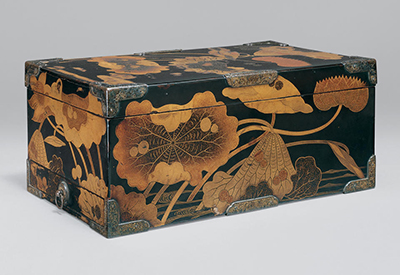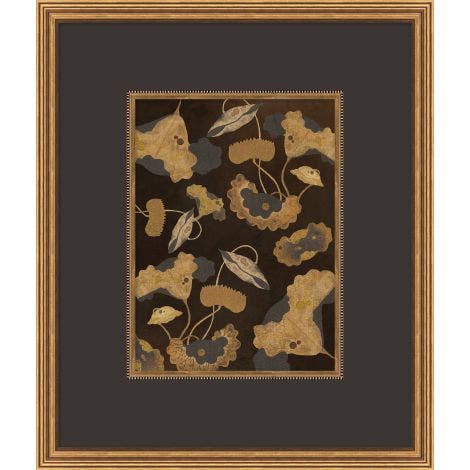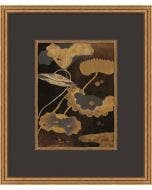Local Storage seems to be disabled in your browser.
For the best experience on our site, be sure to turn on Local Storage in your browser.
Sutra Box with Lotus Pond 2

Our Inspiration: Sutra Box (Kyōbako) with Lotus Pond
Japan, Edo period
Lacquered wood with gold togidashimaki-e, hiramaki-e, and e-nashiji (“pear-skin picture”); early 17th century
Mary Griggs Burke Collection, Gift of the Mary and Jackson Burke Foundation, 2015 2015.300.292a–c
This box with a shallow drawer was made to hold Buddhist sutras and is decorated with the sacred symbol of Buddhist art: the lotus pond. The style of the leaves, stems, and seed heads in the various stages of the plant’s life is reminiscent of early 17th-century designs by Tawaraya Sōtatsu. The application of the hiramaki-e (flat “sprinkled picture”) and e-nashiji (“pear-skin picture”) sprinkling represents a later type of the Kōdaiji lacquer style.

Our Inspiration: Sutra Box (Kyōbako) with Lotus Pond
Japan, Edo period
Lacquered wood with gold togidashimaki-e, hiramaki-e, and e-nashiji (“pear-skin picture”); early 17th century
Mary Griggs Burke Collection, Gift of the Mary and Jackson Burke Foundation, 2015 2015.300.292a–c
This box with a shallow drawer was made to hold Buddhist sutras and is decorated with the sacred symbol of Buddhist art: the lotus pond. The style of the leaves, stems, and seed heads in the various stages of the plant’s life is reminiscent of early 17th-century designs by Tawaraya Sōtatsu. The application of the hiramaki-e (flat “sprinkled picture”) and e-nashiji (“pear-skin picture”) sprinkling represents a later type of the Kōdaiji lacquer style.




